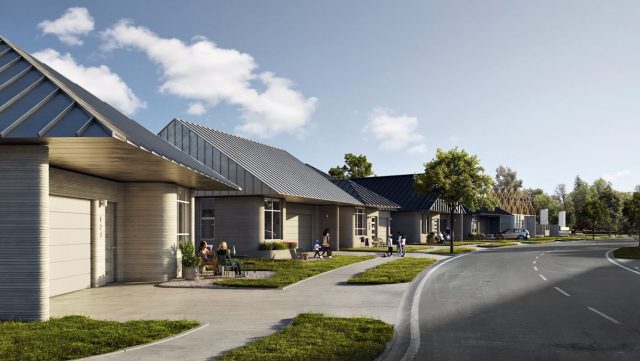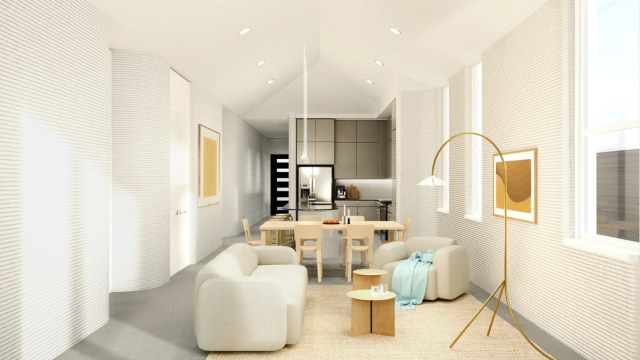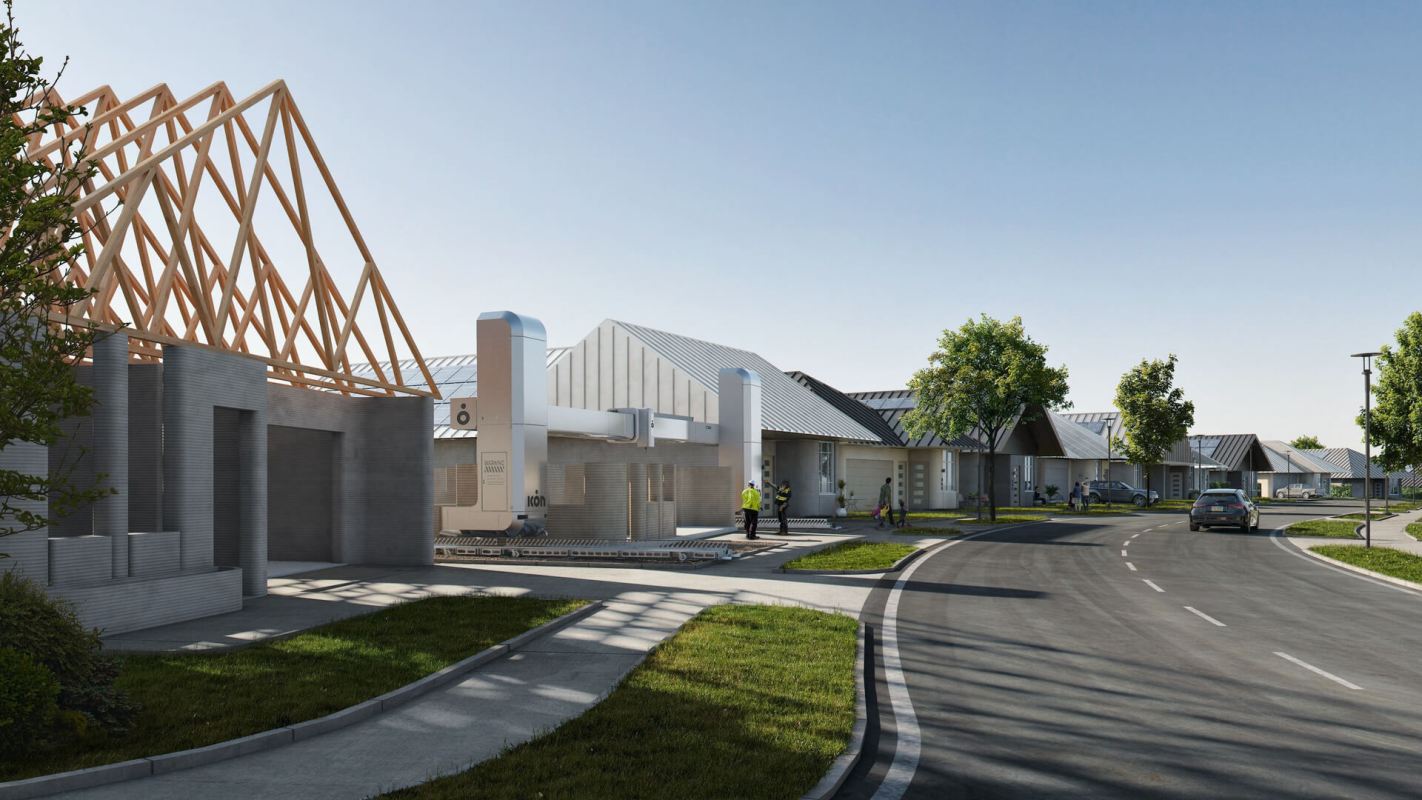Austin is set to house one of the first 3D-printed neighborhoods with 100 homes to be completed by the start of 2023.
Construction company Lennar teamed up with 3D-printing firm ICON to build what it says is the largest community of 3D-printed homes in the world, using a combination of robotics, software, and advanced building materials.
The homes in the impending Genesis Collection, which were co-designed by architectural firm BIG-Bjarke Ingels Group, will contain two to four bedrooms, and they'll be equipped with solar panels to reduce energy bills for homeowners and lower the amount of carbon pollution the community creates.
Reservations for the new community will begin this year with prices starting in the mid-$400,000s for homes ranging 1,500-2,100 square feet. Lennar says it's confident that the houses can remain largely unaffected by rising material or mortgage costs, given their energy efficiency and reliance on a single-building material.

How does 3D printing a house work?
Once a home's design has been customized, the floor plan is fed into the printer's operating system, which then begins to mix the necessary cement to create the home.
A massive, fully-automated 3D-printing machine then squeezes out rows of cement like toothpaste to build up the structure, leaving necessary spaces for the installation of utilities like electrical wiring and plumbing.
Each build site requires the attention of just three human professionals, reducing labor costs.
The printers are able to construct homes in a fraction of the time it takes to build a traditional dwelling, all while lowering costs by around 30% (when compared to similarly sized homes) and reducing waste due to the precision of the printing process.

An antidote to housing crises
3D-printed homes are a potential antidote to the crises of unaffordable housing, lengthy build timescales, and the traditional use of non-sustainable materials in construction.
Traditional housing is expensive and often relies on a number of non-sustainable materials. Since Lennar's homes only rely on one concrete mixture, the supply chain is dramatically-reduced, cutting down on fuel emissions and transport costs.
"This is all about innovation," Stuart Miller, executive chairman of Lennar, told CNBC. "If you go around the country and speak to officials at the local and state level, the single biggest question is: How do we provide workforce housing, affordable housing."

Want more? Follow The Cool Down on Instagram and join our Weekly Newsletter for cool stories and easy tips that save you money, time, and our planet.








